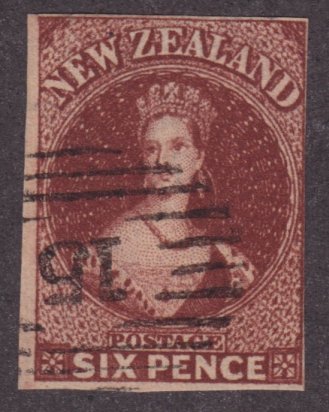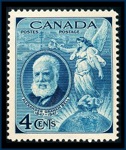
Discussion - Member to Member Sales - Research Center

Discussion - Member to Member Sales - Research Center

https://en.wikipedia.org/wiki/Gustavus_Franklin_Swift


I live in the state of Iowa, USA and I heard on the news the other day that Iowa leads the USA in pork production with 23.6 million pigs. You can drive all over Iowa and never see a single pig, as they are all raised in metal buildings to prevent the spread of infectious diseases. Perhaps some of you reading this will enjoy a ham dinner over the holidays. Give thanks to the North American farmer and the food production system we take for granted.
Happy Holidays,
Linus

2 Members
like this post.
Login to Like.
I really like the postmark -
"...STOCKYARDS STATION..."
Any info you can supply regarding it?
Was there an actual P.O. station servicing the stockyards?

Login to Like
this post
Randy -
There has always been a Stockyards Post Office, going way back, and it is still there today. The cancel is actually quite common, I see it on covers and cards a lot. That area of Chicago is a "city within the city," with trains and possum-belly trucks and animals and packing plants all coming together in a hub of activity.
Linus


Login to Like
this post
You're up in my wheelhouse when you're talking pork production, Linus!
It's been the primary focus of most of my professional career, and continues to be.
I will be in the largest plant in PA next week. They kill about 8,000 per day, on a single line, one shift. That's about 4 seconds per hog.
I always get REALLY hungry when I'm there!
Confinement production evolved (and continues to evolve) to a high art on the need to have control of the hogs' environment. The first hog confinement unit was built at Iowa State University in the 1950s. It was still being used when I was in undergrad there, in the late 1970s.
I have a small topical collection of covers, pig-themed:

The Chester White breed was developed in Chester county, where I lived for 30 years. Not only that, I lived in the building that was the DPO, Gum Tree when I first came to Pennsylvania, in 1985. I can share much more of the Chester White story, with attendant postal history!
And now, back to your regularly scheduled programming!
-Paul

1 Member
likes this post.
Login to Like.
Looking at Linus' postcard a little more closely, I find it interesting that virtually all of the workers in the photo are, apparently, Caucasian women! Looks like the floor manager is a man, standing on some sort of pedestal in the center. Today, the vast majority of plant workers are young men. Around here, the Asian and Hispanic ethnic groups are heavily represented in that workforce...
I also find it interesting that there are so many workers apparently dedicated to the bacon line - at least 40 in that room. With more automation, today, I think the plant I was talking about (Hatfield Quality Meats) utilizes 10 or fewer for the bacon packaging line.
Another thing I find intriguing is that there is a room at Hatfield dedicated to cutting out the heads. There are at least 20 working in that room, all with knives. I still can't imagine there is enough value in heads alone to justify 20 employees doing nothing but.
It all goes into something broadly known as "variety meats". Mexico is a major customer for those products...
-Paul

1 Member
likes this post.
Login to Like.
Pigdoc - Out of all the Stamporama members, I figured you would like this card the most. Thanks for adding to this thread, and nice Chester white cover. My Dad was a cattle buyer for Wilson Packing Company out of Cedar Rapids, Iowa, and before that, at Marshall Pack in Marshalltown, Iowa. I was about 5 years old when Dad took me through Marshall Pack and showed me how they processed cattle. I was not terrified or scared, but I can remember it to this day very clearly. I got handed a raw hot dog at the end of my packing plant tour as a treat!
Linus

1 Member
likes this post.
Login to Like.

Today I will share an old postcard from my postal history collection showing how they used to make bacon back in 1939. The writer of this card must of just finished taking a tour of the Swift & Co. meat packing plant on the south side of Chicago. The stamp is probably a Swift & Co. perfin, purchased along with the postcard, or perhaps given with the postcard as a souvenir of the tour. The packing plant was started by Gustavus Franklin Swift. With only an eighth grade education, he built a multi-million dollar company that adapted the methods of the assembly line and the industrial revolution to the meat packing business, resulting in low cost meat for the United States and the world. He is credited with the development of the first ice-cooled railroad car so that fresh meat could be sent to all parts of the country. Swift pioneered the use of animal by-products for the manufacture of soap, glue, fertilizer, various types of sundries, and even medical products, using "everything but the squeal." To learn more, click this link:
https://en.wikipedia.org/wiki/Gustavus_Franklin_Swift


I live in the state of Iowa, USA and I heard on the news the other day that Iowa leads the USA in pork production with 23.6 million pigs. You can drive all over Iowa and never see a single pig, as they are all raised in metal buildings to prevent the spread of infectious diseases. Perhaps some of you reading this will enjoy a ham dinner over the holidays. Give thanks to the North American farmer and the food production system we take for granted.
Happy Holidays,
Linus

2 Members
like this post.
Login to Like.

re: Making Bacon Postcard From 1939
I really like the postmark -
"...STOCKYARDS STATION..."
Any info you can supply regarding it?
Was there an actual P.O. station servicing the stockyards?

Login to Like
this post

re: Making Bacon Postcard From 1939
Randy -
There has always been a Stockyards Post Office, going way back, and it is still there today. The cancel is actually quite common, I see it on covers and cards a lot. That area of Chicago is a "city within the city," with trains and possum-belly trucks and animals and packing plants all coming together in a hub of activity.
Linus


Login to Like
this post
11:26:21am
re: Making Bacon Postcard From 1939
You're up in my wheelhouse when you're talking pork production, Linus!
It's been the primary focus of most of my professional career, and continues to be.
I will be in the largest plant in PA next week. They kill about 8,000 per day, on a single line, one shift. That's about 4 seconds per hog.
I always get REALLY hungry when I'm there!
Confinement production evolved (and continues to evolve) to a high art on the need to have control of the hogs' environment. The first hog confinement unit was built at Iowa State University in the 1950s. It was still being used when I was in undergrad there, in the late 1970s.
I have a small topical collection of covers, pig-themed:

The Chester White breed was developed in Chester county, where I lived for 30 years. Not only that, I lived in the building that was the DPO, Gum Tree when I first came to Pennsylvania, in 1985. I can share much more of the Chester White story, with attendant postal history!
And now, back to your regularly scheduled programming!
-Paul

1 Member
likes this post.
Login to Like.
11:41:03am
re: Making Bacon Postcard From 1939
Looking at Linus' postcard a little more closely, I find it interesting that virtually all of the workers in the photo are, apparently, Caucasian women! Looks like the floor manager is a man, standing on some sort of pedestal in the center. Today, the vast majority of plant workers are young men. Around here, the Asian and Hispanic ethnic groups are heavily represented in that workforce...
I also find it interesting that there are so many workers apparently dedicated to the bacon line - at least 40 in that room. With more automation, today, I think the plant I was talking about (Hatfield Quality Meats) utilizes 10 or fewer for the bacon packaging line.
Another thing I find intriguing is that there is a room at Hatfield dedicated to cutting out the heads. There are at least 20 working in that room, all with knives. I still can't imagine there is enough value in heads alone to justify 20 employees doing nothing but.
It all goes into something broadly known as "variety meats". Mexico is a major customer for those products...
-Paul

1 Member
likes this post.
Login to Like.

re: Making Bacon Postcard From 1939
Pigdoc - Out of all the Stamporama members, I figured you would like this card the most. Thanks for adding to this thread, and nice Chester white cover. My Dad was a cattle buyer for Wilson Packing Company out of Cedar Rapids, Iowa, and before that, at Marshall Pack in Marshalltown, Iowa. I was about 5 years old when Dad took me through Marshall Pack and showed me how they processed cattle. I was not terrified or scared, but I can remember it to this day very clearly. I got handed a raw hot dog at the end of my packing plant tour as a treat!
Linus

1 Member
likes this post.
Login to Like.

